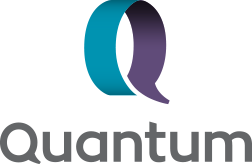Although you may not do tax return preparation, your clients do rely on you for strategies which can help them reduce their tax burden. In fact, many of our financial advisor partners work in tandem with CPAs and tax professionals either yearly, or in periodic strategy sessions with clients. Here are eight common tax-planning strategies that financial advisors may recommend based on their client’s unique situation.
If Clients Are Working
“Beef Up Your Traditional 401(k)”
In general, for those who are able to participate in an employer-sponsored group retirement plan like a traditional 401(k), contributing more to that account can lower a client’s taxes in a given earning year. Contributions to a traditional 401(k) are made on a pre-tax basis, meaning that they do not count as taxable income, potentially dropping them into a lower tax bracket for the year. (They would see that reflected on their annual W-2 from their employer.)
For 2023, workers are allowed to contribute up to $22,500 to their 401(k) plan, plus an additional catch-up contribution amount of $7,500 for those age 50 or older. It is important to remember that these contributions are tax-deferred, meaning that they will pay taxes upon withdrawal. If their company provides a matching amount for contributions, in most cases advisors recommend contributing at least the amount needed to receive the full match.
NOTE: With the passage of SECURE Act 2.0, in 2024 employers will be able to add matching amounts to a client’s Roth 401(k).
“Contribute to a Traditional IRA”
A traditional individual retirement account is an account independent of an employer that allows a client to contribute funds to save and invest for retirement at any age and at any income level, as long as they have taxable compensation.
In terms of tax savings, depending on their income level—or whether or not they or their spouse contributes to a 401(k) or similar plan at work—a client may be able to deduct traditional IRA contributions from their taxes. Those married and filing jointly in 2023 can deduct their traditional IRA contribution if their joint income is $116,000 or less. For 2023, they are allowed to contribute up to $6,500*, plus an additional catch-up contribution amount of $1,000 if age 50 or older.
“Contribute to a Roth IRA”
Roth IRA accounts have the same annual contribution limit as traditional IRAs, but contributions to a Roth IRA are not tax-deductible because account holders fund their accounts with post-tax dollars. The benefit of Roth accounts is that their gains and withdrawals are generally tax-free after the account has been in place for five years, slicing future tax obligations. (The only exception is that for those under age 59-1/2, the gains are taxable if withdrawn.)
Two other advantages of Roth accounts are that RMDs (required minimum distributions) are not required and that they can be left tax-free to your heirs in most cases, although they must be drained and closed within 10 years of inheritance.
Unlike traditional IRAs, Roth IRAs have income limits for contributions. For 2023, clients can contribute the full $6,500*/$1,000 catch-up limit to a Roth IRA if their single-filing income is $138,000 or less or married-filing-jointly income is $218,000 or less. Single filers and those who are married filing jointly can contribute partial amounts with income of up to $153,000 and $228,000, respectively. They can’t contribute to a Roth IRA if their single-filing income is more than $153,000 or married-filing-jointly income is more than $228,000.
*In any given year, a client can contribute to a traditional IRA, a Roth IRA or a combination of both only up to the $6,500/$1,000 catch-up limit.
If Clients Have Taxable Investments
“Try Tax-Loss Harvesting”
Tax-loss harvesting is a strategy typically used by investors who have experienced losses in their investments. It involves selling those positions while they’re at a lower point, realizing a loss and then using those losses to offset taxable gains. In a given year, investors can claim losses of up to $3,000 to lower their taxable income; however, losses can be carried forward into future years. Oftentimes, investments are sold during market downturns, then proceeds are reinvested with a new allocation. This has the potential to significantly decrease an investor’s tax obligation while improving overall portfolio returns.
For Clients Close to Retirement
“Consider Roth Conversions”
A Roth conversion or series of conversions can be a helpful long-term strategy to convert tax-deferred retirement funds into tax-free funds, allowing clients to withdraw that money without tax obligation in retirement and bypass RMDs if they don’t need the funds, all while allowing them to leave the money tax-free to heirs.
It’s important to remember that clients will owe taxes on converted funds in the tax year that they complete any conversion, and before age 59 ½, they have to pay a penalty on amounts withdrawn from traditional IRA or 401(k) accounts for conversions.
Roth conversions can’t be undone, so it’s important to plan carefully and map out a retirement income strategy during periods such as the beginning of retirement, when income levels can be purposely lower.
“Add Annuities and Permanent Life Insurance”
Annuities and life insurance policies can be great ways to reduce tax obligations for some clients.
Depending on how an annuity is funded, payments may be taxed differently. For annuities purchased with non-qualified money, the interest grows and is credited on a tax-deferred basis, so only gains will be taxed annually. For annuities purchased with qualified money, such as money from a traditional 401(k) or IRA, annuity payments are entirely taxable as ordinary income. But even if clients owe income tax on their annuity payments, annuities are not counted as part of the combined income calculation by the Social Security Administration.
Life insurance policies also offer tax benefits. The classic death benefit is typically paid out tax-free to heirs, granting them a nice lump sum to help recover from the loss of their loved one. But modern life insurance policy designs offer living benefits to the policyholders themselves. Because permanent policies with a cash value portion, such as whole and indexed universal life policies, are funded with post-tax dollars, policyholders can borrow from the cash value of the policy tax-free in retirement, and these amounts are not counted as income by the Social Security Administration either.
For Clients in Any Phase of Life
“Consider Charitable Giving”
Charitable giving can be a great way for clients to help an organization or a cause they care about while also reducing their tax obligation. The rules for charitable giving are relatively simple, as the gifts or donations must simply be made to or for the use of a qualified organization, which generally includes charities, religious organizations and private foundations with tax-exempt 501(c)(3) status. Those making charitable donations also have many options when it comes to the type of gift, such as cash, property, stock holdings or other any other assets that have a determinable market value.
Of course, there are limits on deductions for charitable giving. Deductions on long-term capital gains are limited to 30% of a person’s adjusted gross income, while deductions for other contributions are limited to 60% of a person’s adjusted gross income.
In retirement, if clients don’t need the money and don’t want their income taxes to go up, they can contribute their RMD amount (called a QCD or qualified charitable donation) directly to a charity—up to $100,000 of qualified, pre-tax retirement money can be donated. After 2023, this QCD limit will be indexed to inflation under the new SECURE Act 2.0.
“Create or Update Your Estate Plan”
An estate plan can be a valuable tool in mitigating tax obligations for your clients and their heirs, offering ways to transfer tax-advantaged wealth. This can be even more important as 2026 inches closer.
Beginning in 2026, the estate tax gift exemption will be cut in half (back down to 2017 levels) then adjusted for inflation. In 2023, the exemption is $12.92 million per person, meaning that couples can gift up to $25.84 million with no federal estate taxes assessed. It can be particularly crucial for your high-net-worth clients (or clients living in areas with high real estate values) to have an estate plan in place to mitigate future estate taxes as the laws change. Advanced planning techniques, such as life insurance set up in conjunction with trusts, can be invaluable strategies when set up correctly by attorneys.
When it comes to tax planning strategies, Quantum offers our partners access to our insurance platform with hundreds of annuity and life insurance products from dozens of carriers, some of them patented and available only through limited distribution. Call us for specific case designs for your clients: 800.440.1088.
Sources:
https://www.irs.gov/newsroom/401k-limit-increases-to-22500-for-2023-ira-limit-rises-to-6500
https://www.fidelity.com/retirement-ira/ira-rules-faq
https://www.irs.gov/taxtopics/tc409
https://www.annuity.org/annuities/taxation/
https://www.fidelitycharitable.org/faqs/all/charitable-deduction-limitations.html
https://www.fidelity.com/learning-center/wealth-management-insights/TCJA-sunset-strategies
FOR FINANCIAL PROFESSIONAL USE ONLY
This article is provided for general information only and is not to be construed as financial or tax advice. It is recommended that you work with your financial advisor, tax professional and/or attorneys for tax planning advice relevant to your unique situation.
A natural coach and leader with 20 years in the industry, Jim uses his vast experience to deliver the most successful strategies to our advisors.















